Secret history of decorated Bomber Command hero who survived 63 missions, bombed Hitler's barges and planned Dambusters raid is uncovered in memoir found after his death
-
•Bomber Command hero John Collier survived 63 dangerous WWII missions
-
•He was awarded three top medals and was considered for a Victoria Cross
-
•Later joined mission planning team and helped organise Dambusters raid
-
•After leaving RAF, Mr Collier lived a humble life and rarely spoke of service
-
•Loved ones learned extent of his bravery after finding memoir when he died in 2000, aged 83
By Ollie Gillman for MailOnline
Published: 20:13, 9 March 2015 | Updated: 20:38, 9 March 2015
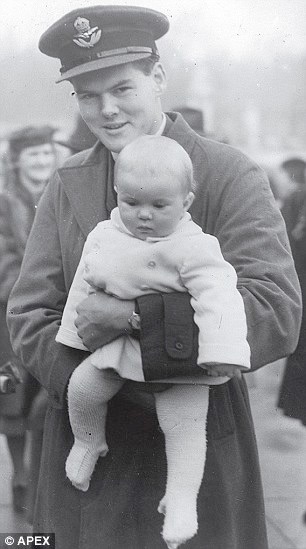
Hero: John Collier survived 63 bombing missions in the Second World War and helped plan the Dambusters raid
The secret history of a decorated Bomber Command hero who survived 63 missions, bombed Hitler's barges and planned the Dambusters raid has been uncovered after his death.
John Collier was awarded three top medals for his heroic and brave service during the Second World War, but lived a humble life after he left the RAF and rarely spoke of his incredible achievements.
He died aged 83 in 2000, only for an unpublished memoir recording his feats to be unearthed by his family in his home in the New Forest, Hampshire.
Now his story has been told in a biography - titled Group Captain John 'Joe' Collier - written by family friend Simon Gooch.
Mr Gooch and the family of Mr Collier discovered that the airman's first mission took place mere hours after war against Germany was declared on September 3, 1939.
The mission was one of the first bombing missions of the war and involved searching for German warships in the North Sea.
Another mission described in the memoir described Mr Collier flying a twin-engined Hampden bomber on a raid on a canal lock in Munster, Germany, on August 12, 1940, when his plane was hit.
He recalled later: '"Hell" my navigator said, "I have been hit in the bottom and am bleeding - what shall I do?"
'"Sit on it", I said, "until we're out of this". And sit on it he did without a murmur of complaint...'
Squadron Leader Collier was mentioned in despatches and is aid to have been recommended for a Victoria Cross.
He might have been given that highest award for valour if another person on the operation had not got the VC. 'There seems to have been a rule of one per op,' Mr Gooch wrote.
He went on to become one of the most decorated pilots of the early years of the conflict in the desperate days when Britain seemed certain to be invaded and then defeated.
His second war career came in planning bombing missions as Britain and its Allies gradually gained the upper hand.
Later he would plan the pinpoint missions to stop the Germans' revolutionary rocket weapons that John feared might swing the conflict back in the Nazis' favour.
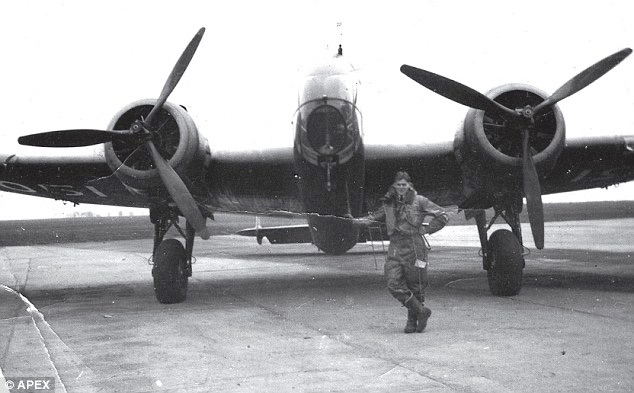
Bomber: The brave airman's first mission took place mere hours after war against Germany was declared

After being presented with three medals for his service as a courageous bomber, Mr Collier (standing second from left) was transferred into a crack team of specialist mission planners
Seven days after the Munster raid, Mr Collier was awarded the Distinguished Flying Cross (DFC), jointly for that mission and an attack on oil tanks in Bordeaux.
Little more than a week after that award he suffered severe concussion and was lucky to survive when his bomber crashed on landing.
Others were less fortunate. His close friend Guy Gibson VC - one of the most famous airmen of the war - noted sadly that by late 1940 most of the original comrades of 83 Squadron were dead, missing, prisoners of war or wounded.
In 1941, after a six-month convalescence, he was transferred to 44 Squadron and later that year was awarded a Bar to his DFC - the equivalent of a second medal.
In March 1942 he was put in command of 97 Squadron flying the newly-introduced four-engined Lancaster, and took part in the first 1,000-bomber raid on Cologne on May 30, 1942.
He was awarded the Distinguished Service Order after his last raid on a German engine factory in Augsburg in August 1942.
He recounted how he would stand the bomber 'almost on its nose and dive furiously towards the earth, when I thought that the anti-aircraft (guns) had the measure of me - a bit nerve-racking for the rest of the aircrew, but an effective measure of evasion to which I consider I owe my life on more than one occasion'.
Mr Collier stopped flying because the Air Ministry needed an experienced bomber officer to join a crack team of specialist mission planners, where he stayed until the end of the war.
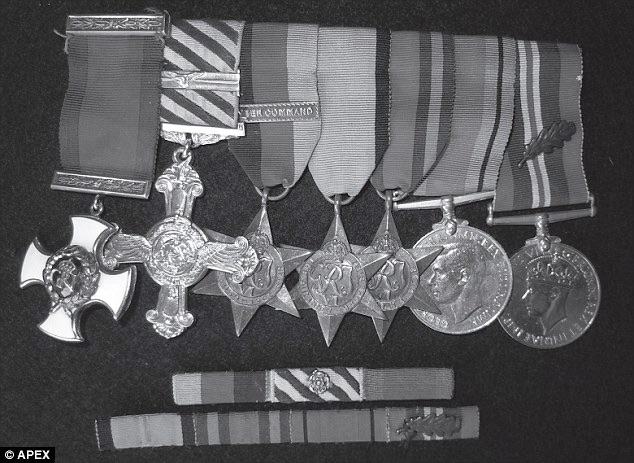
Mr Collier was given the Distinguished Flying Cross, was awarded a bar to it and was also given the Distinguished Service order, among a host of other medals
Writing shortly after the war ended, Mr Collier said: 'It is difficult to imagine that adventure can be found in the Ministry, surely the excitement and glory of War is on the Battlefield?
'I suppose it could be said I had my fair share of adventure during the four years I was on operations in Bomber Command.
'I refrain from writing about these adventures because they were in no way different from those experienced by so many airmen of that gallant Command, and further so many books have been written by real heroes, and my personal friends, such as Guy Gibson VC and Leonard Cheshire VC, both of whom are household names today.'
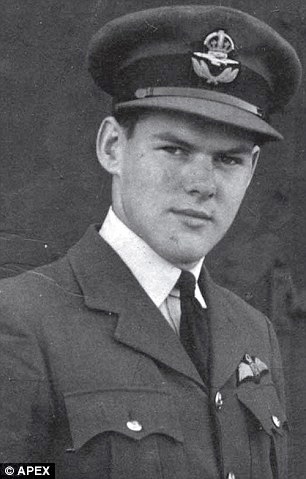
Mr Collier died in 2000 aged 83, with loved ones only realising the extent of his achievements when his memoir was unearthed
'I found my adventure in this war in the Air Ministry.... I was in a privileged position to watch the most interesting period of the war in Europe during the two most vital years.
'I had my sense of great thrill and disappointment, and occasionally of achievement, event though such achievements were initially on paper.'
Mr Collier's work in the Ministry was outstanding and vital. He liaised with Barnes Wallis, designer of the 'bouncing bomb', and with Wing Commander Guy Gibson on the Dambuster Raid in which the weapon was successfully used.
German reservoirs, hydroelectric schemes, armaments factories and dozens of bridges were destroyed - all in one mission.
Even late in the war, with Allied troops closing in on victory in Europe, Mr Collier and his team were doing vital work targeting and attacking the factories making and supplying the 'V' weapons that were wreaking havoc in Britain.
The V1 and V2 missiles caused terror among civilians in London - and even struck fear into Mr Collier.
'I wasn't aware until reading his memoir, and other reading around it, that they were worried that the missiles would carry some sort of nuclear warhead or biological agent,' Mr Gooch said..
After peace in 1945, John served in Sri Lanka, Japan and the RAF Staff College in Bracknell, Berkshire.
After leaving the military, John worked as a land agent and after retiring from paid work devoted time to helping the children's charity Barnardo's.
He was fully retired and living in the New Forest when Mr Gooch got to know him.
'He did not indulge very much in reminiscing,' the family friend said.
'His relations rather looked up to him. I had a feeling there was something special about him but I was not bold enough to ask him.'
'He was very genial, very sympathetic, a benign presence.'
'THE BOMBERS ALONE PROVIDE THE MEANS OF VICTORY'
RAF Bomber Command's role during World War Two was to bomb the enemy's airbases, shipping, troops, communications and other industries connected to the German war effort.
Britain had to use long-range bombing after Dunkirk in 1940 until D-day in 1944 as it had no other way of attacking the Germans.
The job fell to RAF air crews - some of who were just 18 - who flew increasingly heavier types of long-range bombers.
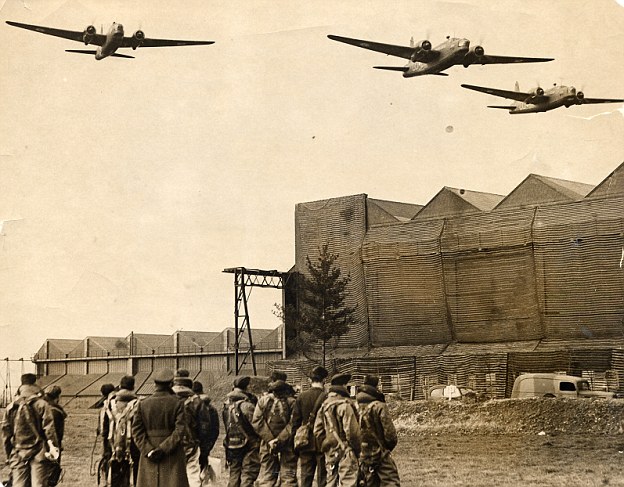
It was so successful that Hitler was forced to divert nearly a million men, 55,000 artillery guns and a large part of the German air force on to defending the nation instead of fighting offensively.
Bomber Command flew almost every day and mostly at night during the war to avoid being shot down - but this meant it was difficult to locate small targets.
In 1941 it was decided whole industrial cities should be priority targets. Larger four-engine bombers and improved navigation equipment then followed to create a formidable fighting force.
The repeated and persistent attacks on German cities which followed became a critical factor in the liberation of Europe and the defeat of Nazi Germany in 1945.